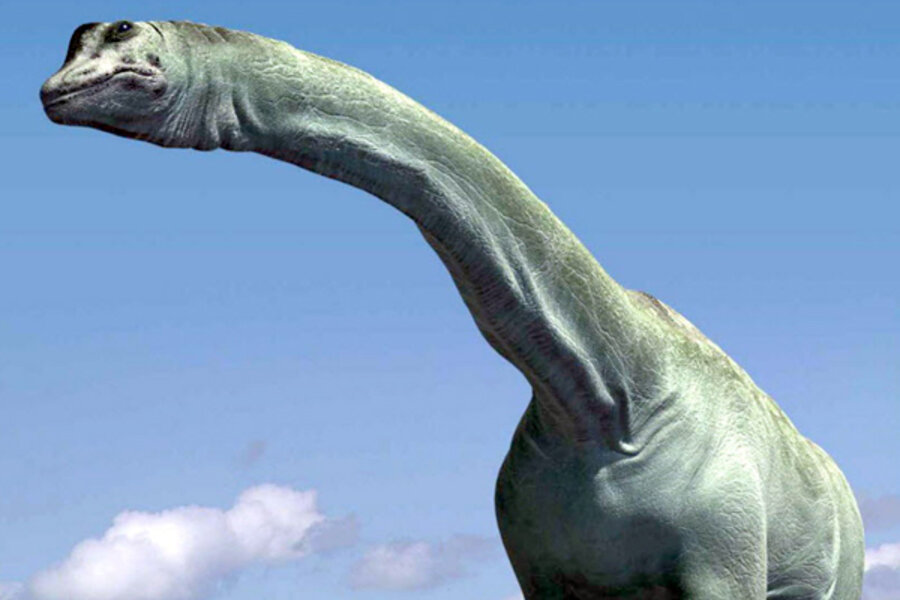Scientists: Dinosaur flatulence may have warmed Earth
Loading...
In a major new climate finding, researchers have calculated that dinosaur flatulence could have put enough methane into the atmosphere to warm the planet during the hot, wet Mesozoic era.
Like gigantic, long-necked, prehistoric cows, sauropod dinosaurs roamed widely around the Earth 150 million years ago, scientists reported in the journal Current Biology on Monday.
And just like big cows, their plant digestion was aided by methane-producing microbes.
"A simple mathematical model suggests that the microbes living in sauropod dinosaurs may have produced enough methane to have an important effect on the Mesozoic climate," researcher Dave Wilkinson of Liverpool John Moores University said in a statement.
"Indeed, our calculations suggest that these dinosaurs could have produced more methane than all modern sources - both natural and man-made - put together," Wilkinson said.
Methane is a potent greenhouse gas, with as much as 25 times the climate-warming potential as carbon dioxide.
This gas is enough of a factor in modern global warming that scientists have worked to figure out how much methane is emitted by cows, sheep and other plant-eating animals.
The inquiry raised questions about whether the same thing could have happened in the distant past.
Wilkinson and co-author Graeme Ruxton of the University of St. Andrews worked with methane expert Euan Nisbet at the University of London to make an educated guess about the degree to which gaseous emissions from sauropods could have warmed the atmosphere.
Calculating methane emissions from modern animals depends only on the total mass of the animals in question. A mid-sized sauropod probably weighed about 44,000 pounds, and there were a few dozen of them per square mile (kilometer), the researchers found.
They reckoned that global methane emissions from sauropods were about 520 million tons per year, comparable to all modern methane emissions. Unlike emissions of carbon dioxide, which come from natural sources but also from the burning of fossil fuels, methane emissions have decreased substantially since the start of the Industrial Revolution some 150 years ago.
Before the fossil-fuel intensive Industrial Revolution took off, methane emissions were roughly 200 million tons annually; modern ruminants, including cows, goats, giraffes and other animals, emit between 50 million and 100 million tons of methane a year.







